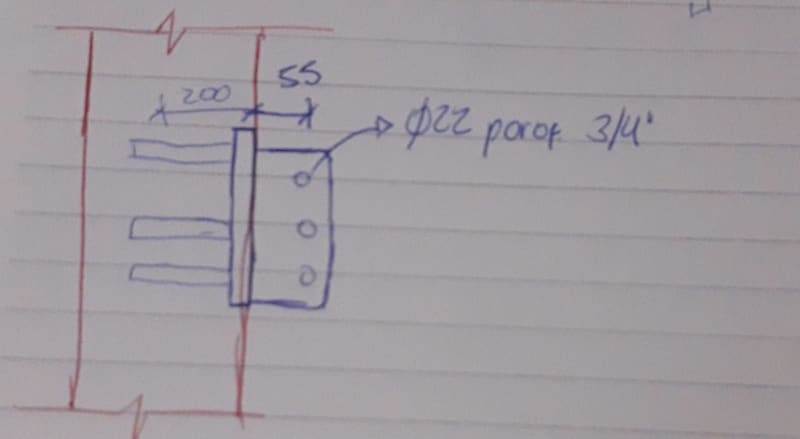Hello,
I started recently designing for a company and was asked to design some shear connections between steel beams and precast concrete columns. The connection is very simple, composed of a two plates welded as a T at which are welded weldable rebars to be inserted in the precast columns, as shown in the image below.

I'm used to design only steel so i have no questions about the bolt and plate designs, so my question is about the rebar design, since the rebar is subjected to shear. Is the rebar strength equal to 0,577*Φ*fy*As? Can i use a all round fillet weld to the bar or i must bend the bar to fillet weld? Is there another concert on this type of connection?
I think that the strength of the bar is given by this equation but since i've never designed rebar in this situation, it'd be good to hear your opinions.
Thank you.
I started recently designing for a company and was asked to design some shear connections between steel beams and precast concrete columns. The connection is very simple, composed of a two plates welded as a T at which are welded weldable rebars to be inserted in the precast columns, as shown in the image below.

I'm used to design only steel so i have no questions about the bolt and plate designs, so my question is about the rebar design, since the rebar is subjected to shear. Is the rebar strength equal to 0,577*Φ*fy*As? Can i use a all round fillet weld to the bar or i must bend the bar to fillet weld? Is there another concert on this type of connection?
I think that the strength of the bar is given by this equation but since i've never designed rebar in this situation, it'd be good to hear your opinions.
Thank you.
